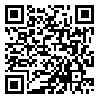Volume 28 - Supplementary
IBJ 2024, 28 - Supplementary: 149-149 |
Back to browse issues page
Download citation:
BibTeX | RIS | EndNote | Medlars | ProCite | Reference Manager | RefWorks
Send citation to:



BibTeX | RIS | EndNote | Medlars | ProCite | Reference Manager | RefWorks
Send citation to:
Moradi Z, Ataei Azimi A, Moghbeli F. Educational Escape Rooms as Innovative Training Tools in Medical Education: A Systematic Review. IBJ 2024; 28 :149-149
URL: http://ibj.pasteur.ac.ir/article-1-4670-en.html
URL: http://ibj.pasteur.ac.ir/article-1-4670-en.html
Abstract:
Introduction: Escape room is a team activity that forces players to solve a series of puzzles within a specific time, reach a code or key to solve the story, and leave the room. This project has several implementation methods: physical, immersive cinematic escape room, virtual, and online puzzles. Escape rooms provide players experiential learning by creating specific missions to assess the environment, analyze keys, and solve complex challenges. This research aimed to investigate escape rooms as innovative training tools in medical education. Search Strategy: According to the keywords "escape room", "medical education", and "courses", we reached 307 articles in Google Scholar, PubMed, and Science Direct from 2022 to 2024. Among the articles searched, 281 were relatively linked to our topic. Finally, this systematic review included 26 articles. The PRISMA guidelines were followed for this search. Titles and abstracts were evaluated independently. Then, the full text of the articles was reviewed, and a standardized form was utilized for the study title, courses, number of participants, study objectives, and main findings.
Results: This article has been used in teaching nursing, veterinary medicine, nephrology, anesthesia assistants, dental nurses, pharmacy, and physiotherapy, achieving a higher satisfaction rate (96%) compared to traditional methods. Dynamic learning techniques and reverse learning serve as effective alternatives to conventional teacher-centered education, as they actively engage students in the learning process. This engagement fosters improved knowledge acquisition and consolidation, making these methods a valuable complement to traditional educational approaches.
Conclusion and Discussion: Educational escape rooms provide an engaging
way to "gamify" medical course learning. They could be used as an alternative to traditional methods, offering higher satisfaction and more accessible learning opportunities.
Results: This article has been used in teaching nursing, veterinary medicine, nephrology, anesthesia assistants, dental nurses, pharmacy, and physiotherapy, achieving a higher satisfaction rate (96%) compared to traditional methods. Dynamic learning techniques and reverse learning serve as effective alternatives to conventional teacher-centered education, as they actively engage students in the learning process. This engagement fosters improved knowledge acquisition and consolidation, making these methods a valuable complement to traditional educational approaches.
Conclusion and Discussion: Educational escape rooms provide an engaging
way to "gamify" medical course learning. They could be used as an alternative to traditional methods, offering higher satisfaction and more accessible learning opportunities.

Type of Study: Full Length/Original Article |
Subject:
Related Fields
| Rights and permissions | |
 |
This work is licensed under a Creative Commons Attribution-NonCommercial 4.0 International License. |







.png)
